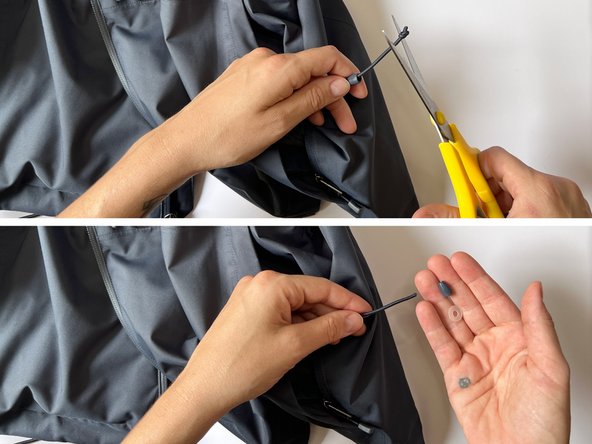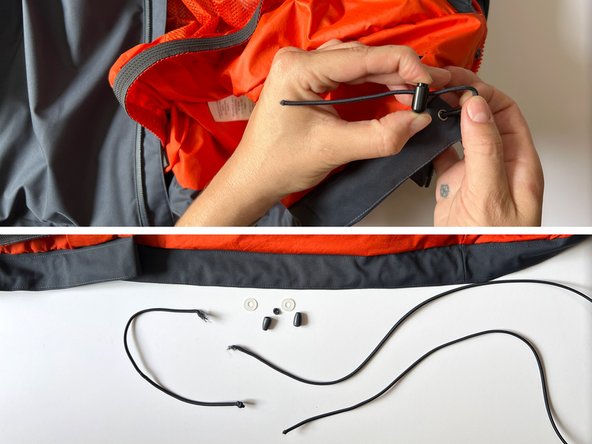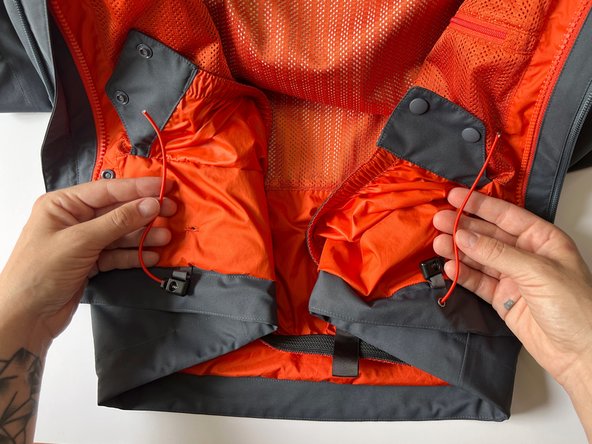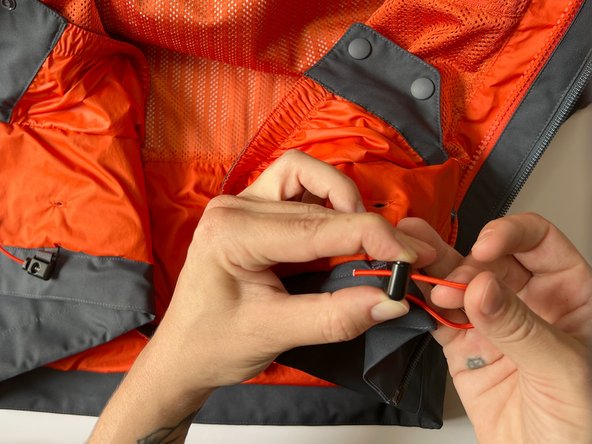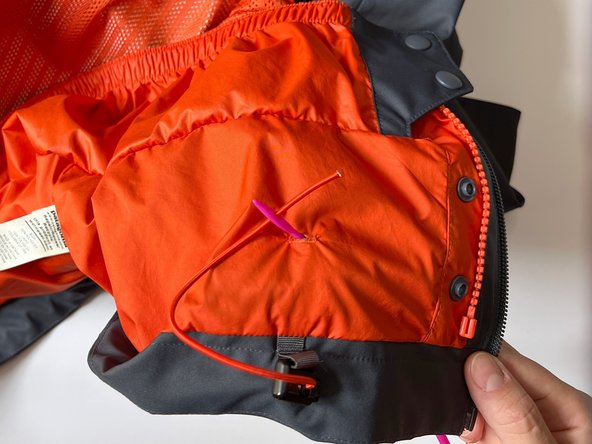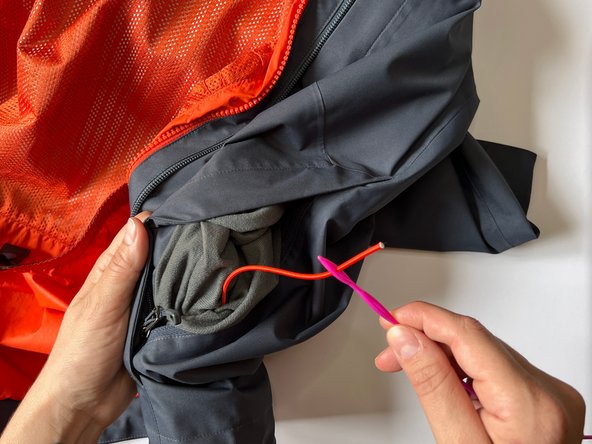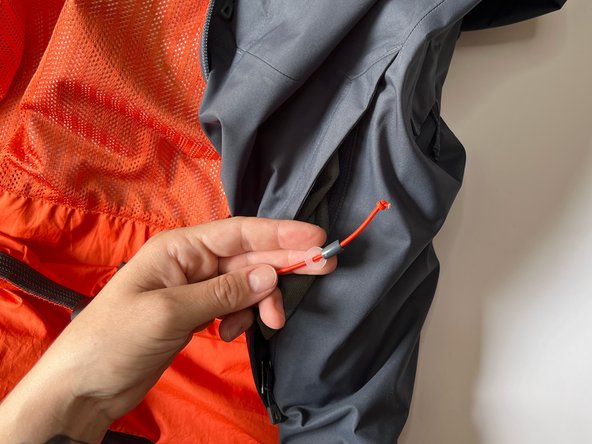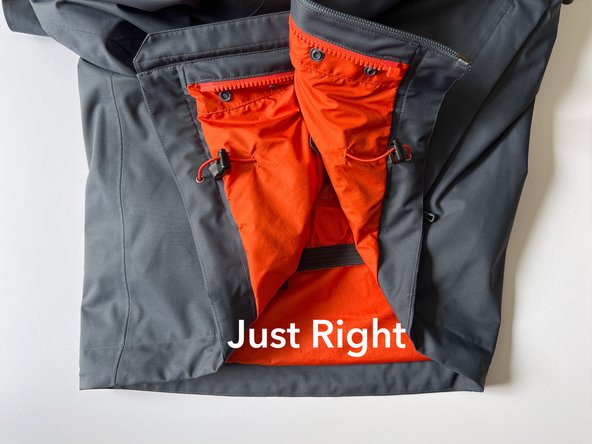Elastic Drawcord Replacement
ID: 181267
Description: A drawcord is a length of cording, often...
Steps:
- Assess the state of the drawcord - if it's damaged, stretched out, or missing entirely.
- If original drawcord is present, take note of:
- Design - How the drawcord is threaded into the garment (e.g. through hand pockets or a grosgrain loop)
- Cord Lock - How the drawcord threads through the cord lock(s)
- Other Pieces - If the drawcord is used with any additional hard trims like end caps or clear plastic discs
- If the drawcord is missing entirely, please see Step 3.
- On both ends of the drawcord:
- Use flush cutters to pry off the tip of the end cap.
- Pull the drawcord end out of the end cap and untie the knot.
- Remove the base of the end cap and any plastic discs (if present).
- Wear safety glasses.
- Save all these pieces.
- Unthread the drawcord by releasing the tension from the cord locks and pulling it out of the garment completely.
- The drawcord end knots can also be cut for faster removal (reference image #2). If doing so, add 1 inch (~25 mm) to the measurement in Step 3.
- If the drawcord isn't stretched out or missing any part, use the old drawcord as a reference to measure and cut the appropriate length for a new one.
- Alternatively, to measure and cut a new drawcord without the old one:
- Measure the length of the hem.
- Add the distance the cord travels to and from any cord locks.
- Add 2 inches (~51 mm) to account for a 1 inch (~25 mm) seam allowance on each end.
- Add an additional 1 inch (~25 mm) if the drawcord end knots were cut in Step 2.
- Use a lighter to singe the cut ends of the drawcord.
- Discard broken pieces responsibly.
- Use your fingers or a plastic drawstring threader to thread the new drawcord through the hem.
- Once through the hem, double check that the drawcord length is correct.
- Thread the drawcord through any cord locks and associated grosgrain tabs.
- Use a plastic drawstring threader, latch hook, bodkin, or safety pin to thread the drawcord ends into pockets.
- Thread the plastic disc and the end cap base onto the drawcord end.
- Tie a knot at the end of the drawcord. Pull it tight and snip or singe away any excess.
- Pull the drawcord so the knot rests inside the end cap base.
- Check that the knot doesn't pull through the end cap.
- Replace end cap tip by snapping it into place.
- Pull on the ends of the drawcord to make sure they're secured and that the drawcord is functioning properly.
- Test the drawcord's function at each cord lock.
- Make a final check on the drawcord length when the cord locks are loosened and the drawcord is laying naturally:
- Too Tight - Not enough cord. The hemline will bunch.
- Too Loose - Too much cord. Excess drawcord will either undulate inside the hemline or hang loosely from the cord locks.
- VARIATIONS: There are many varieties of drawcords on the vast array of Patagonia items. The techniques and steps outlined in this tutorial can be rearranged or modified to fit the circumstances.
- MISSING CORD: If the drawcord is missing entirely, use grosgrain loops, eyelets and rivets as context clues. Alternatively, try to find photos of the item on Patagonia.com, WornWear.com, and Google image search.
- HOOD: Hood drawcords can be more complex with multiple lengths of elastic that can loop around one another. Be careful to examine the placement of drawcords in a hood before removing them.




